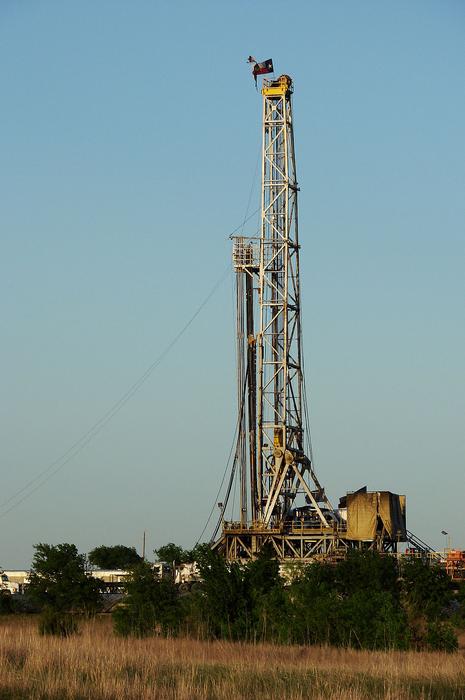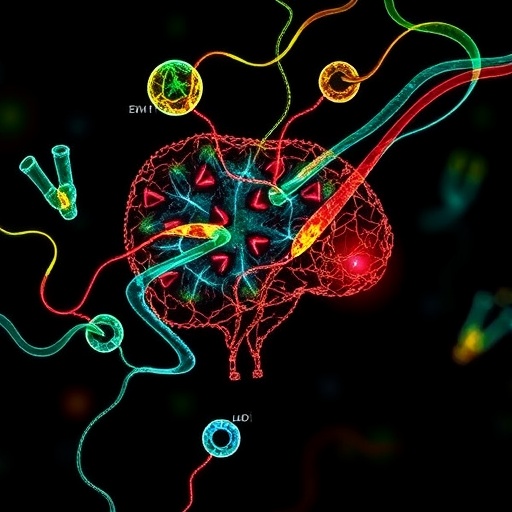New research confirms fracking causes slow, small earthquakes or tremors, whose origin was previously a mystery to scientists. The tremors are produced by the same processes that could create large, damaging earthquakes.

Credit: Loadmaster (David R. Tribble)
New research confirms fracking causes slow, small earthquakes or tremors, whose origin was previously a mystery to scientists. The tremors are produced by the same processes that could create large, damaging earthquakes.
Fracking is the high-pressure injection of fluids underground to extract oil and natural gas. Though it is typically done with wastewater, this study examined data from fracking with liquid carbon dioxide. The process pushes carbon underground and keeps it from trapping heat in Earth’s atmosphere.
By some estimates, carbon dioxide fracking could save as much carbon annually as one billion solar panels. It is much more advantageous for the environment to frack with liquid CO2 than with wastewater, which does not keep carbon out of the atmosphere.
“Because this study examines a process that sequesters carbon underground, there may be positive implications for sustainability, and for climate science,” said Abhijit Ghosh, associate professor of geophysics at UC Riverside and co-author of the study in the journal Science.
Because the carbon dioxide is liquid, however, Ghosh said the results of this study almost certainly apply to fracking with water. Both are likely to cause tremors.
On a seismograph, regular earthquakes and tremors appear differently. Big quakes cause sharp jolts with high amplitude pulses. Tremors are more gentle, rising up slowly above the background noise with much less amplitude, and then slowly decreasing.
“We are pleased that we are now able to use these tremors to track the movement of fluids from fracking and monitor the movement of faults resulting from the fluid injections,” Ghosh said.
Previously, there was debate amongst seismologists about the source of the tremors. While some papers argued the tremor signals were from large earthquakes happening thousands of miles away, others thought they could have been noise generated by human activity, like the movement of trains or industrial machinery.
“Seismometers are not smart. You could drive a truck nearby, or kick one with your foot, and it would record that vibration,” Ghosh said. “That’s why for some time we didn’t know for sure if the signals were related to the fluid injections.”
To determine their origin, the researchers used seismometers installed around a fracking site in Wellington, Kansas. The data covered the entire fracking injection period of six months, as well as a month prior to the injections and a month following them.
After discarding the background noise, the team showed that the remaining signals were generated below ground and only appeared while the fluid injections were occurring. “We did not detect the tremors before or after the injections, which suggests the tremors are related to them,” Ghosh said.
It has been known for some time that fracking can produce larger earthquakes. To keep faults from slipping underground and producing them, or tremors, one option would be to stop fracking. As this is unlikely, Ghosh says it is important to monitor these activities to understand how rocks are being deformed by them, and to track the movement of fluids after injection.
Modeling experiments can be and are performed to help companies determine fluid injection pressures that should not be exceeded. Staying within these limits helps ensure that the fluids will not migrate towards large faults underground, triggering damaging seismic activity. However, not all faults are mapped.
“We can only model this type of experiment when we know there is an existing fault. It is possible there are faults we do not know of, and in those cases, we cannot forecast what will happen,” Ghosh said.
Journal
Science
DOI
10.1126/science.adh1331
Article Title
Tremor signals during fluid injection are generated by fault slip
Article Publication Date
3-Aug-2023




